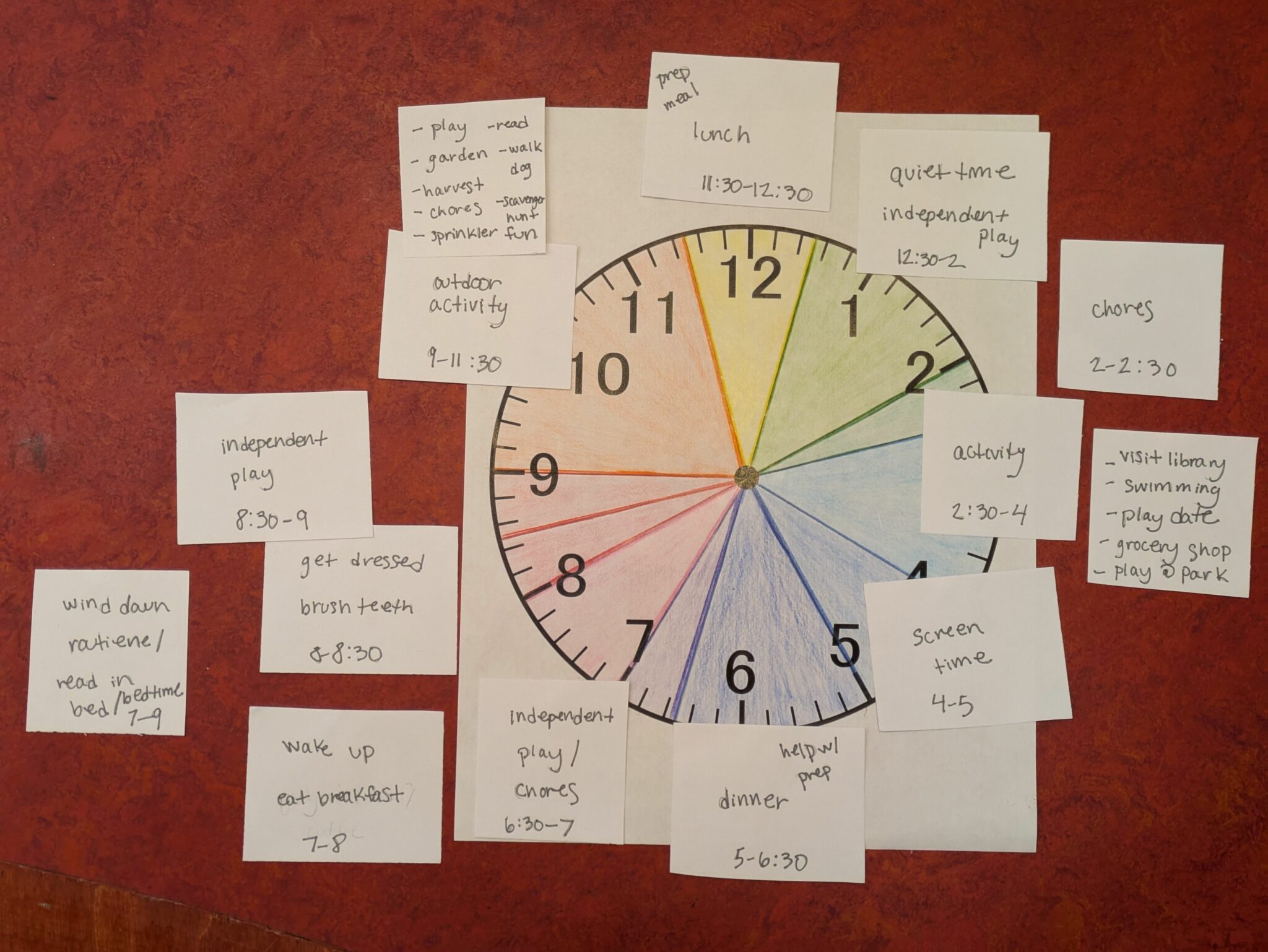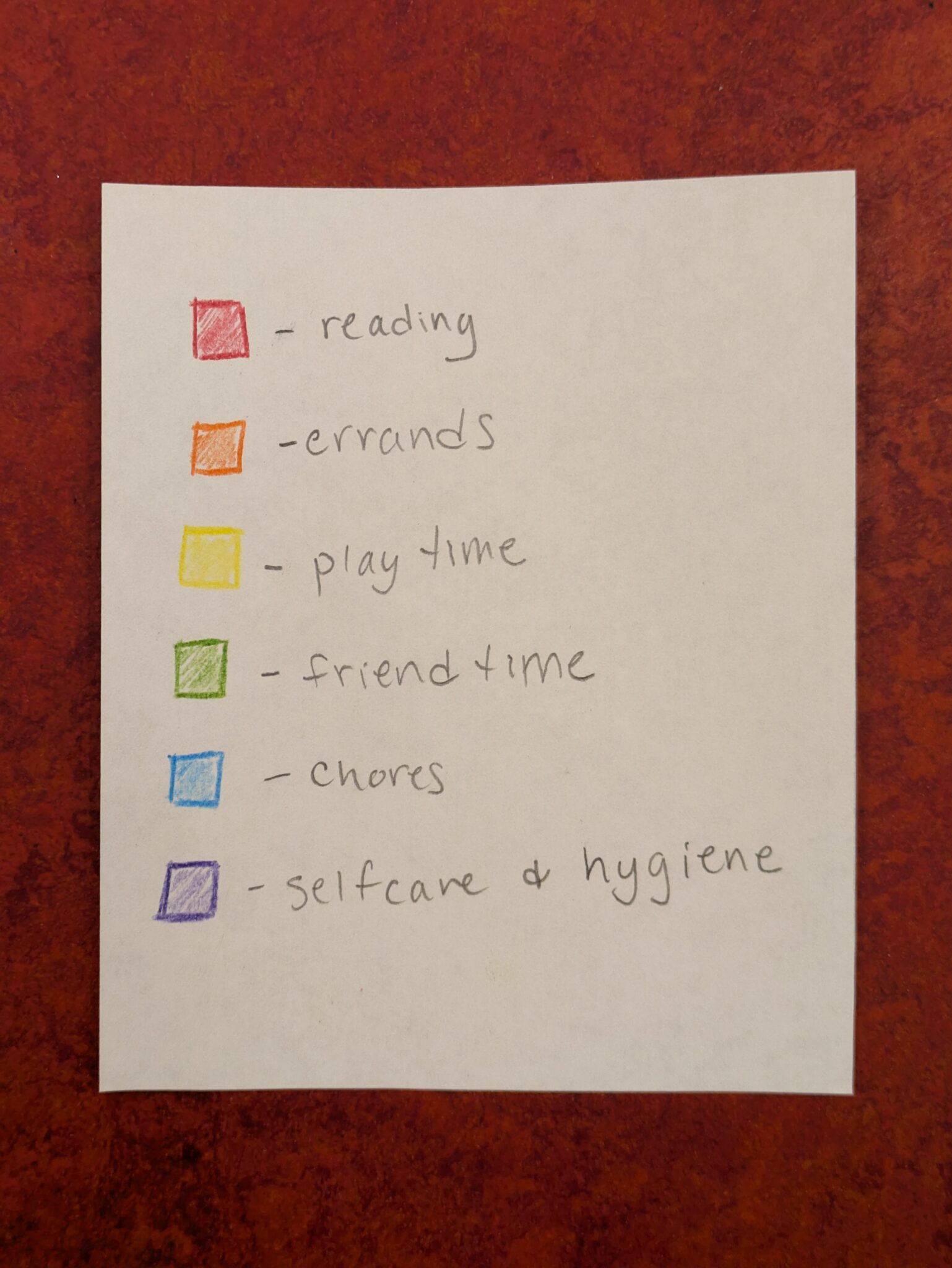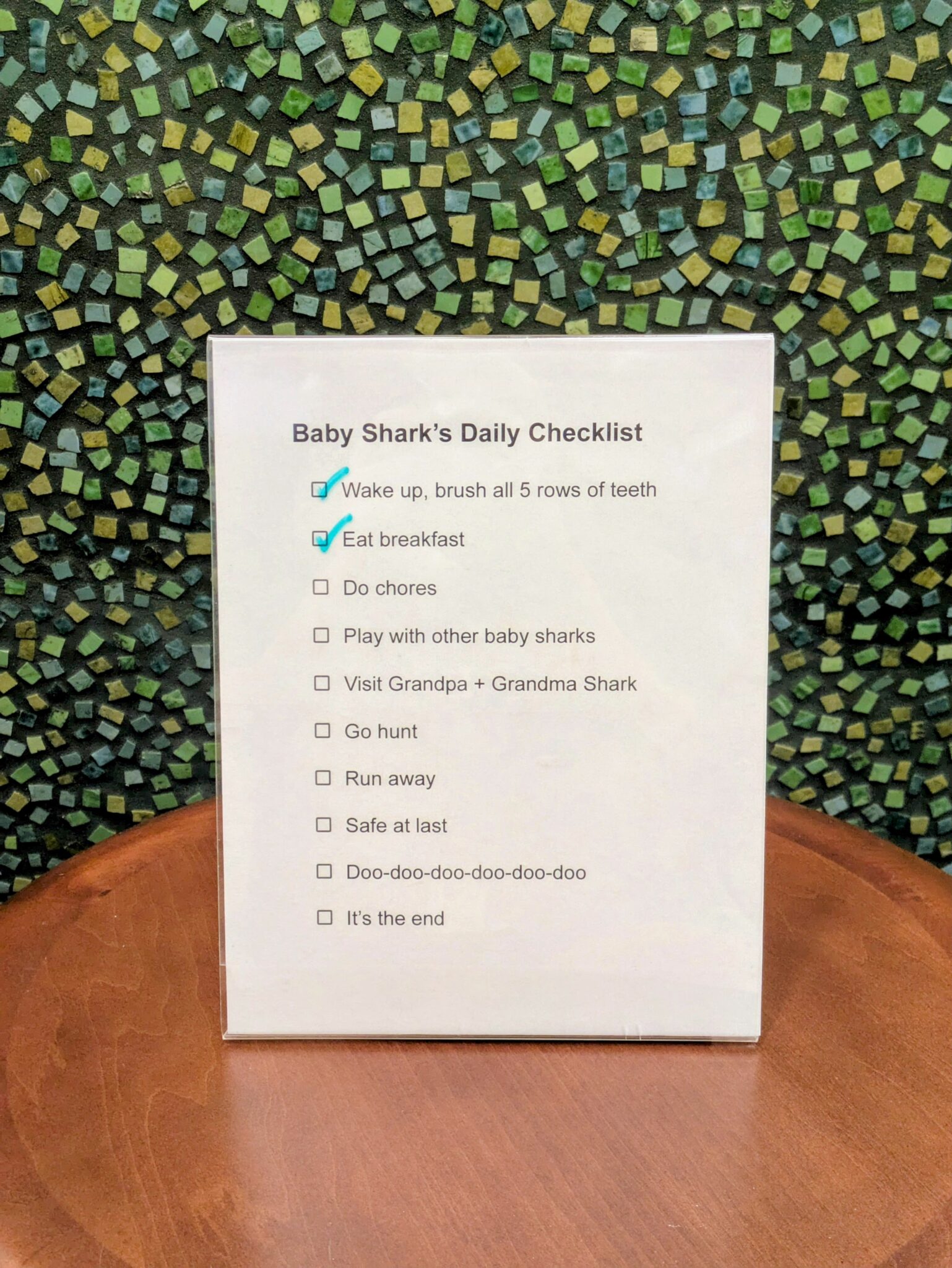With summer school coming to an end, your kids might incessantly be asking about the daily schedule. They’re used to knowing what to expect from a school day, so adjusting to a new daily rhythm at home might lead to constant questions about “what are we doing today?” Or just the universal favorite “I’m bored!” If you have a clock in a common area, making a new face for it would help with the adjustment to a new summer routine by making it visual.
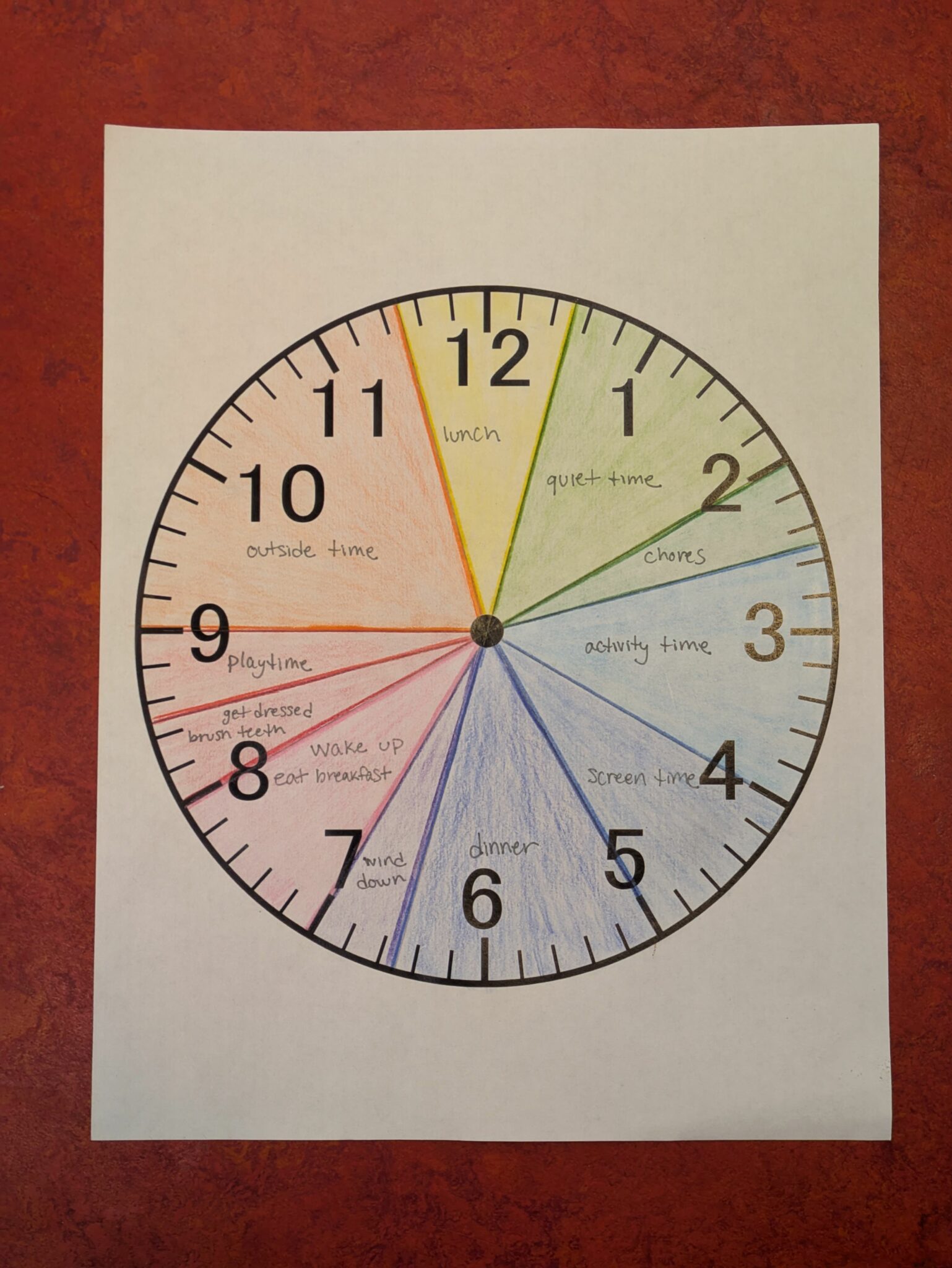 For this craft, you will need:
For this craft, you will need:
-ruler
-something to write with
-something to color with
-paper
-a clock (or something to track time/activities)
Imagine your ideal schedule and decide what you want to include, like necessary tasks, regular events and playtime.
Next, arrange a daily schedule to carve out time each day for those tasks, then decide the best rhythm for the day. I do not have a clock lying around, so I just printed out a blank clock face to demonstrate. If you want to print off your own blank clock face, here is a PDF; if you don’t have a printer at home, you can visit a DBRL location and print one off for $0.10!
Including your children in this might be a fun activity for them. Having them help color in the slices of time and giving them choices (within reason) about how they want the daily rhythm to flow could help them feel like they have some autonomy in the daily routine. Depending on your child’s reading level, adding pictures would be helpful.
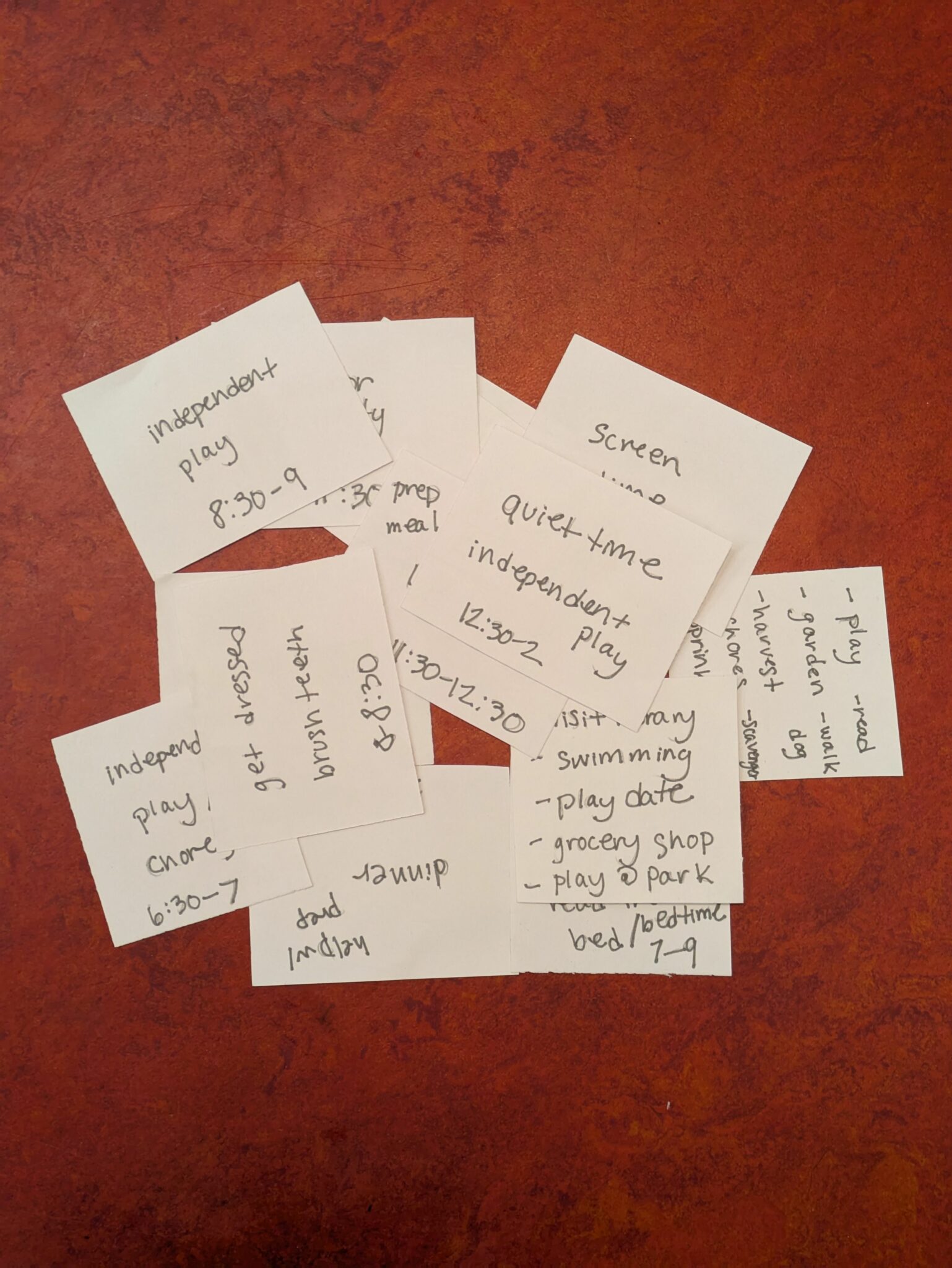
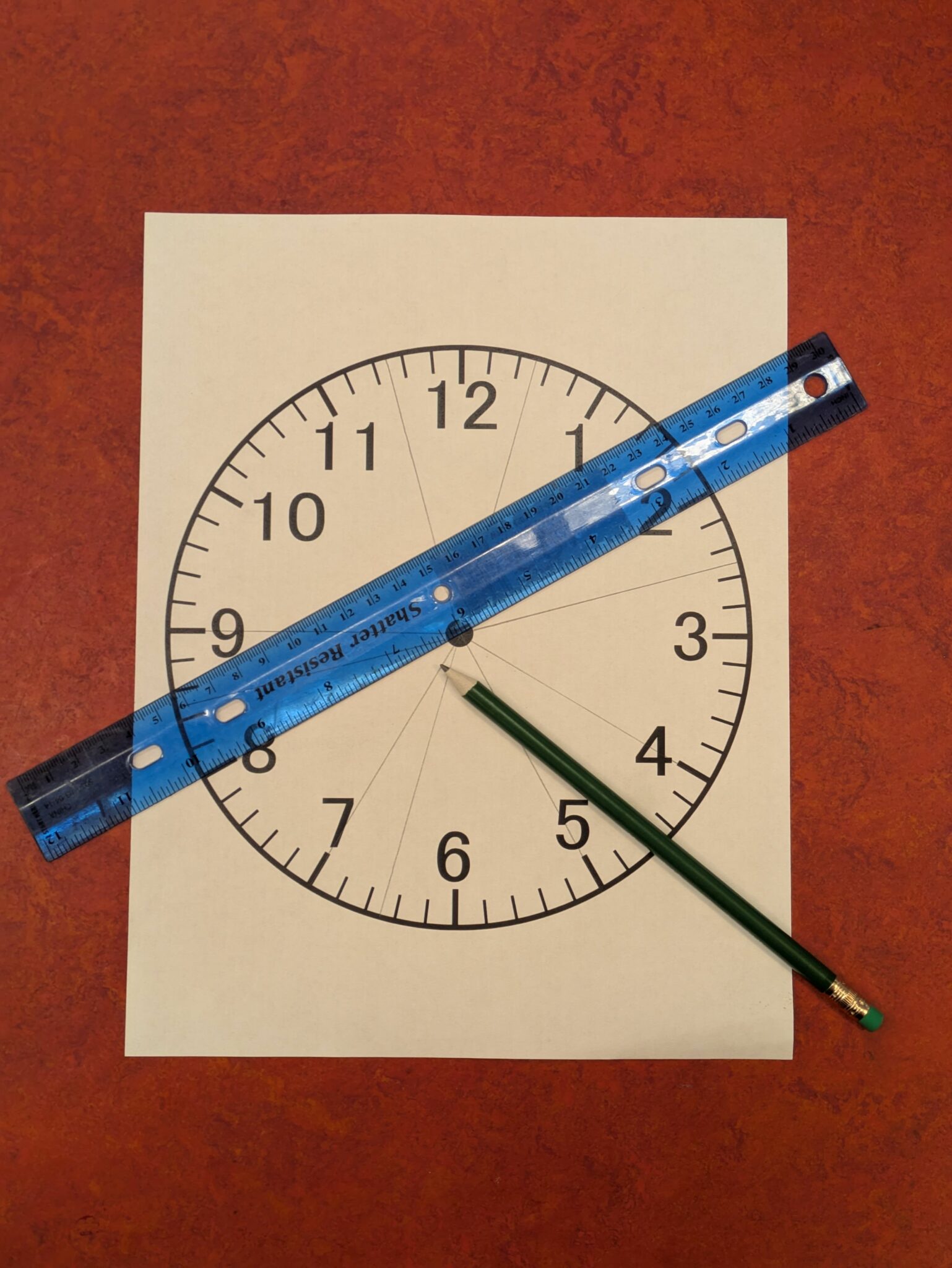

I arranged this mock schedule in an inhale/exhale rhythm, or switching between focused and independent activities. If your children can’t tell time yet, you can remove the minute and second hands to allow them to see where the hour arm is pointing to know the expectation for the current time and see what comes next in the day.
If you can’t get inside your clock to change the face insert, you could use dry erase markers to write on or color in wedges of the clock. This easily allows you to adjust for schedule changes and shorter-term engagements like a week of camp or visits from loved ones. If you choose to color on the clock, have a key to let everyone know what the color coding system indicates. For example, one day the orange slice of the clock could mean swim lessons, but another day would mean a play-date, and yet another day it could be art class. The color key could also include pictures for little ones still learning to read.
If your children are older, consider making a daily expectations tracker. This can be done digitally, on paper, or by using a dry-erase board. Collaborate with your children to see what they would like to incorporate into their daily or weekly schedule alongside your expectations for them. This is also a good way to practice independent time management. An 8.5 x 11 frame is a great substitute for a dry erase board for this, especially because the list can’t be erased accidentally.
I hope this DIY can allow for a better flow throughout your day and bring more calm to the beautiful chaos of child rearing!

